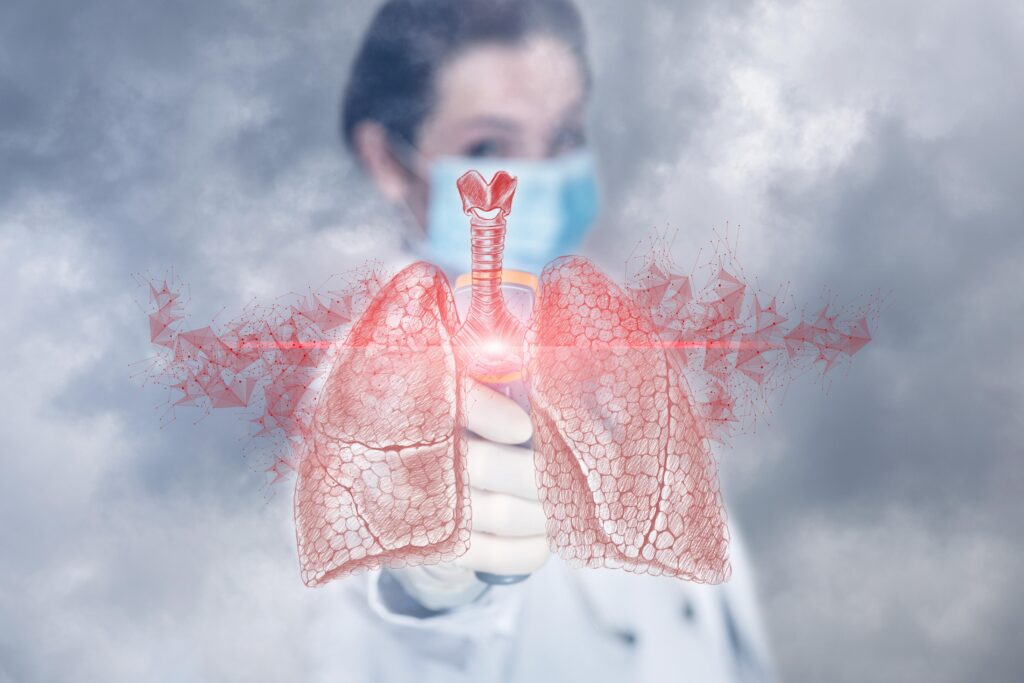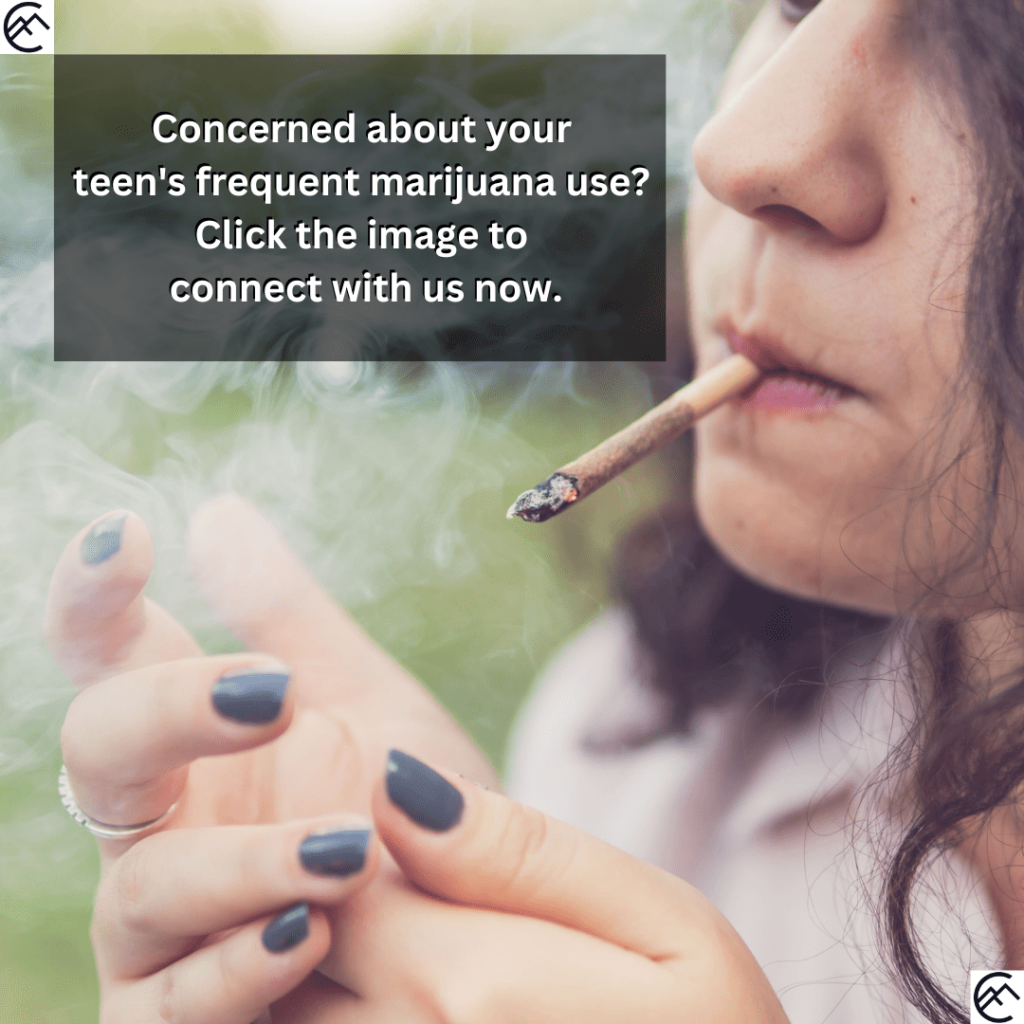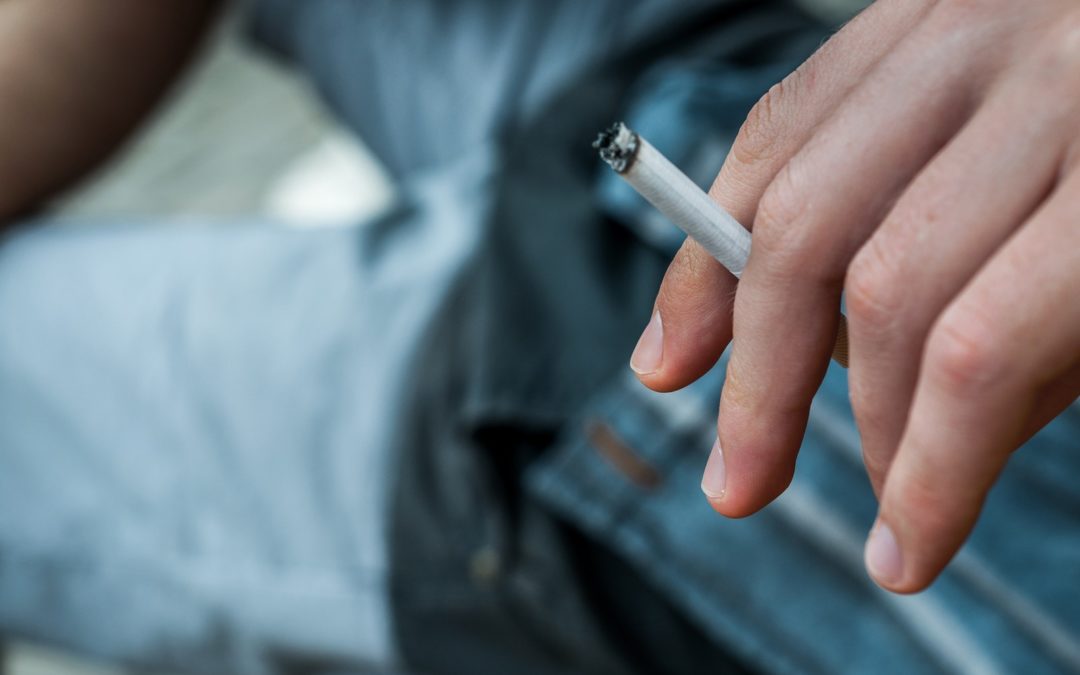Table of Contents
- The Ripple Effect of Legalizing Marijuana on Teen Use
- Connecting Marijuana Legalization to Adolescent Health Concerns
- The Dynamics of Adolescent Marijuana Use Disorder
- How Legalized Weed Finds Its Way to Teens in Non-Legalized States
- Navigating the Intersection of Public Health and Legal Cannabis
- The Influence of Socioeconomic Status on Teen Drug Use
- A Systematic Review of Adolescent Use Trends Post-Legalization
- Recognizing and Addressing Teen Marijuana Addiction
- Key Takeaways
- Frequently Asked Questions
How has the legalization of marijuana affected teenage drug use? This question sits at the heart of a major public health debate.
This article cuts through the clutter to present “the legalization of marijuana implications for teen substance abuse,” examining various studies and the effectiveness of preventative strategies in a straightforward manner.
In doing so, we will explore how changes in the legal status of marijuana shape substance use trends among teens.

The Ripple Effect of Legalizing Marijuana on Teen Use
The ripple effect of marijuana legalization has been far-reaching, with teenagers forming a significant demographic impacted by this shift.
With the increasing societal acceptance of marijuana, teens are more exposed to the substance, which in turn may influence their attitudes and behaviors toward its use.
Legalized marijuana has become more accessible to adolescents, despite the restrictions that are intended to limit its availability to adults.
The social acceptance of marijuana has also spiraled upwards, creating an environment where its use is not only tolerated but even expected in some circles.
However, the relationship between marijuana legalization and teen use is not as simple as it might seem.
While some research suggests that marijuana use among teens has remained stable or even decreased post-legalization, other studies indicate a possible rise.
This inherent complexity necessitates further exploration to understand the dynamics playfully.
Shifts in Teen Attitudes Toward Marijuana
Teen attitudes towards marijuana have significantly shifted due to its legalization.
As marijuana becomes more mainstream, it’s perceived as less risky, particularly among younger individuals in legalized regions such as Washington state.
This reduced perception of risk is further accentuated by the presence of medical marijuana laws, which could foster more lenient attitudes among youngsters.
Also, the stigma associated with its use among teenagers has been reduced thanks to the legalization of marijuana.
This shift in perception has led to an increased tolerance and acceptance of marijuana use, consequently influencing a change in attitude towards lower perceived risk of use and potential mental health problems.
Accessibility and Social Acceptance
Undeniably, marijuana’s accessibility among teenagers has been influenced by its legalization. Legalized weed finds its way to teens even in non-legalized states.
This increased accessibility, coupled with the heightened social acceptance of marijuana, can contribute to adolescent substance use.
With marijuana becoming more mainstream, peer pressure among teenagers could potentially increase, leading to more adolescent users.
However, the relationship between marijuana legalization and its prevalence among teenagers in non-legalized states is not as straightforward as it may seem. Research indicates that:
- Legalization does not significantly impact the prevalence or frequency of adolescent marijuana use, including medical marijuana use.
- Other factors, such as social norms and availability, play a larger role in determining adolescent marijuana use.
- The impact of marijuana legalization on adolescent use may vary depending on the specific regulations and policies implemented.
This nuanced relationship underscores the need for additional research by a national institute and a comprehensive understanding of the broader implications of marijuana legalization.

Connecting Marijuana Legalization to Adolescent Health Concerns
Marijuana legalization introduces several adolescent health concerns. While marijuana is often touted for its therapeutic benefits, its use during adolescence can have adverse effects.
Regular marijuana use is linked to an elevated risk of psychiatric disorders such as depression and anxiety, as well as cognitive impairments affecting memory and learning.
The issue becomes even more concerning when considering that adolescents who engage in recreational marijuana use are two to four times more likely to develop psychiatric disorders compared to non-users.
Addressing these health concerns necessitates a robust response from mental health services and the implementation of effective substance abuse prevention programs.
One of the recommended substance abuse prevention programs for adolescents is the Residential Treatment for Teens program, which has demonstrated effectiveness in reducing both alcohol and illicit drug use among adolescents.
Mental Health Services Response
Mental health service providers have adjusted their strategies in response to the potential health risks of increased marijuana use among teens.
They employ nonjudgmental and factual approaches, initiate mutually agreed-upon interventions, and provide brief interventions to address marijuana use in adolescents.
In regions where cannabis use has been legalized, mental health professionals have even altered their perspective, now perceiving marijuana as a substance with potential therapeutic effects for various conditions.
Mental health services, including those provided by the Mental Health Services Administration, can potentially reduce the risks associated with teen marijuana use by offering treatment options for cannabis use disorder and addressing cognitive, psychological, and social consequences.
However, the effectiveness of these measures largely depends on their accessibility and the willingness of adolescents to seek help.
Substance Abuse Prevention Programs
Substance abuse prevention programs are vital in combating the potential consequences of adolescent marijuana use. These programs educate teenagers about the risks of marijuana use through various strategies, such as:
- Resistance skills training to identify peer pressure situations
- Offering information on the adverse effects of marijuana use
- Implementing effective programs to decrease youth marijuana use
Schools also have a significant role to play in these prevention programs. They provide drug education programs, educate about the risks of drug abuse, and offer counseling and support services for students.
Christian-based/evidence-based programs such as Clearfork Academy have proven effective in preventing substance abuse among teenagers.

The Dynamics of Adolescent Marijuana Use Disorder
The rising concern is marijuana use disorder among adolescents. It presents with difficulties in learning, memory, coordination, and decision-making, and it elevates the likelihood of developing psychiatric disorders such as depression, bipolar disorder, and schizophrenia.
Addressing adolescent marijuana use disorder, however, is not without its challenges. The limited availability of evidence-based treatments designed specifically for this demographic and accessibility issues affected by the legalization context pose significant challenges.
Despite these challenges, there are effective treatment options available. Cognitive behavioral psychotherapies are recognized as effective treatment options for addressing adolescent marijuana use disorder.
However, the prevalence of adolescent marijuana use disorder in states where marijuana is legal is not well-specified. There is a correlation between legalization and a rise in problematic use among both teenagers and adults, warranting further research and attention.
Treatment Availability and Challenges
Despite the increasing prevalence of adolescent marijuana use disorder, the treatment system faces significant challenges in delivering effective care.
The high prevalence of marijuana use disorders among young people necessitates effective behavioral treatment approaches, yet these are often hard to come by.
The availability of treatments is further complicated by factors such as the availability of higher potency marijuana, the initiation of use at an earlier age, and the presence of social anxiety disorder as a risk factor.
However, there is hope. Innovative treatments are currently in development for adolescent marijuana use disorder. These include new behavioral treatments and a first-in-class drug that selectively inhibits the signaling pathway of the cannabinoid receptor.
Such advancements could significantly improve the outlook for teens struggling with marijuana use disorder.

How Legalized Weed Finds Its Way to Teens in Non-Legalized States
Despite the strict regulations surrounding legalized cannabis, there is a growing concern about how it makes its way to teens, especially in states where it’s not legalized.
The trend indicates a complex network of distribution that transcends state lines, often driven by the perception of marijuana as a less harmful substance compared to other drugs.
This movement is facilitated by various means, including online channels, informal networks, and in some cases, through individuals traveling to states where cannabis is legal and bringing it back.
The ease of obtaining marijuana in states where it’s legalized creates a surplus that can spill over into neighboring regions, inadvertently increasing accessibility for teens in non-legalized states.
This situation presents a unique challenge for law enforcement and public health officials who strive to mitigate the unintended consequences of cannabis legalization on underage populations in areas where its use remains prohibited.
How Products like ‘Dabs’ Travel from California to Texas
The journey of potent cannabis products like ‘Dabs’ from California, a state with legalized marijuana, to states like Texas, where it remains illegal, highlights a significant issue in the control of cannabis distribution.
These highly concentrated forms of marijuana are often smuggled across state lines, finding their way into the hands of street drug dealers who then sell them to local teens.
The allure of ‘Dabs’ lies in their high THC content, which makes them more appealing and potentially more dangerous to young users seeking stronger effects.
The route from legal markets to illicit ones involves discreet and often sophisticated methods of transportation and distribution, making it challenging for law enforcement to track and intercept.
This interstate flow of cannabis products like ‘Dabs’ not only complicates the legal landscape but also poses a serious public health concern, as teens in states like Texas are exposed to these potent forms of marijuana without the safeguards and regulations present in legal markets.

Navigating the Intersection of Public Health and Legal Cannabis
Navigating the complex landscape of public health and legal marijuana is challenging. While marijuana legalization brings with it numerous implications, it is essential to enact regulatory measures that control the potential for abuse of legal cannabis.
In this context, public health campaigns and education initiatives become crucial tools in mitigating the potential negative impacts of marijuana use, particularly among teenagers.
Successfully navigating this intersection requires a multifaceted approach. It involves not only implementing effective regulatory measures but also ensuring that these measures are complemented by public health campaigns that educate the public about the potential risks of marijuana use.
Public Health Campaigns and Education
Mitigating the potential risks associated with marijuana use significantly relies on public health campaigns and education initiatives.
Research has shown that targeted televised public service announcement campaigns have proven to be effective in decreasing marijuana use among teenagers.
Such campaigns can adjust to evolving attitudes by taking into account the social and environmental factors that affect drug use and enacting measures such as imposing taxes on commercial cannabis to deter adolescent consumption.
Public health education also has the potential to influence teenagers’ perceptions of marijuana. By providing accurate information about marijuana’s impact on brain development and overall health, public health education initiatives aim to dispel myths and misconceptions about marijuana. In doing so, they can promote healthier choices among teens.
Regulatory Measures and Protective Policies
Mitigating the potential negative impacts of marijuana legalization on teens hinges on regulatory measures and protective policies. These include prevention interventions, DEA initiatives, literature reviews, normative education approaches, and prioritizing prevention of youth initiation.
The government plays a crucial role in implementing these measures, which include prioritizing marijuana education programs, preventing and reducing youth use, educating adults on marijuana laws, and implementing restrictions on where marijuana can be consumed.
However, the impact of these measures on the availability and usage of marijuana among teenagers following its legalization is varied.
Some studies indicate that legalization may result in increased availability, greater social acceptance, and potentially lower prices, while other studies suggest that there has been no discernible impact on marijuana use rates among adolescents or young adults.
These findings underscore the importance of continually evaluating and fine-tuning these regulatory measures and protective policies.

The Influence of Socioeconomic Status on Teen Drug Use
Teen drug use is significantly influenced by socioeconomic status. Elevated socioeconomic status is linked to increased occurrences of binge drinking, marijuana, cocaine use, and drug alcohol use during the early adult years.
Conversely, lower socioeconomic status, characterized by lower maternal education and non-white-collar occupations among fathers, is linked to heightened vulnerability to drug use among adolescents.
Adolescents in lower socioeconomic statuses frequently encounter disparities such as under-resourced school systems, lack of health insurance, and absence of regular healthcare access.
These obstacles can impact their academic achievements and future economic opportunities, potentially influencing their substance use behaviors. Therefore, addressing these socioeconomic disparities is crucial to effectively combat teen drug use.

A Systematic Review of Adolescent Use Trends Post-Legalization
A complex picture is revealed in post-legalization trends of adolescent marijuana use. Research findings show varied trends, with some indicating no substantial increase in overall youth use, while others suggest potential increases in specific age groups or regions.
For instance, following the legalization of marijuana, the prevalence of cannabis use in the past 30 days decreased by 22.0% in grade 8 and by 12.7% in grade 10, but no notable effects were observed in grade 12.
These diverse outcomes can be ascribed to factors such as:
- The differentiation between cannabis use and cannabis use disorder
- The intricacy of influences on adolescent behavior
- The diverse potential effects on educational achievements
The varied outcomes underscore the need for ongoing research to fully understand the implications of marijuana legalization on adolescent use trends.

Recognizing and Addressing Teen Marijuana Addiction
As part of the broader conversation surrounding marijuana use and legalization, recognition and addressing of teen marijuana addiction is vital.
Indicators of marijuana addiction in adolescents include alterations in behavior such as reduced motivation, subpar academic performance, and social withdrawal from family and friends.
If there is a suspicion of marijuana addiction, it is advisable to seek professional assistance.
However, there are prevalent misunderstandings regarding the use and addiction of marijuana among teenagers. Some of these misconceptions include:
- the belief that marijuana is harmless due to its natural origin
- the misconception that it is non-addictive
- misunderstandings about its adverse effects on learning and memory
Signs of Teen Substance Abuse
The journey toward intervention and recovery begins with recognizing the signs of teen substance abuse. Typical indicators of marijuana misuse in adolescents include:
- Altered behavior
- Reduced motivation
- Impaired memory and concentration
- Heightened irritability
- Social withdrawal
It’s important to distinguish between recreational use, characterized by the use of marijuana for enjoyment or relaxation without resulting in negative consequences or harm, and abuse, which involves excessive and problematic use leading to adverse effects on mental health, social functioning, and overall well-being.
The impact of marijuana abuse on a teenager’s daily life and behavior can be significant. It may result in:
- Difficulties in learning, memory, coordination, and impaired cognitive functions
- Challenges at school
- Increased aggression
- Car accidents
- Risky behavior
Apart from impacting normal brain development, these effects can have a lasting impact on a teenager’s life.
Resources for Recovery
Despite the challenging journey to overcome marijuana addiction, resources are available to aid teens through this process.
SAMHSA’s National Helpline offers a free, confidential, 24/7, 365-day-a-year treatment referral and information service, which can provide effective treatment programs for adolescent marijuana addiction.
These treatment resources can be a lifeline for teenagers struggling with marijuana addiction.
However, the effectiveness of these resources largely depends on the willingness of the teenager to seek help and the support they receive from their families and communities.
Therefore, creating supportive and understanding environments is crucial to the recovery process.

Key Takeaways
- The legalization of marijuana has led to a shift in teen attitudes towards the drug, reduced perceived risk, and increased social acceptance, highlighting complex dynamics in its use and varying impacts on adolescent use in different regions.
- Marijuana legalization raises adolescent health concerns, including increased risk of psychiatric disorders and cognitive impairments, necessitating a multi-faceted response from mental health services and substance abuse prevention programs.
- Policies and regulatory measures, coupled with targeted public health campaigns and education initiatives, are critical for mitigating the negative impacts of legalized marijuana on teens, underlining ongoing research and adaptations to these strategies.
Frequently Asked Questions
What are the concerns of the legalization of marijuana?
The concerns of marijuana legalization include increased marijuana use and abuse, potential effects on driving abilities, unintentional ingestion by children, potency of marijuana products, drugged driving incidents, and parallels to the tobacco industry’s practices. These factors indicate potential risks to public health and safety.
What are the effects of marijuana on teens?
Marijuana can have various negative effects on children, including lung irritation, asthma attacks, anxiety, agitation, confusion, and ataxia. Additionally, THC ingestion can lead to symptoms such as lethargy, coma, and nausea.
Does the legalization of marijuana reduce the crime rate?
Yes, the legalization of marijuana has been shown to reduce crime rates associated with the illegal drug trade and increase tax revenue. Studies have suggested a beneficial impact on violent crime clearance rates as well.
How has marijuana legalization affected teen attitudes toward its use?
Teens’ attitudes towards marijuana use have shifted due to legalization, with many perceiving it as less risky.
How does socioeconomic status influence teen drug use?
Teen drug use can be influenced by socioeconomic status, as higher socioeconomic status is associated with an increased likelihood of binge drinking, marijuana, and cocaine use during early adulthood, while lower socioeconomic status is linked to higher vulnerability to drug use.

Anna graduated from Texas Tech University in 2012 with a Bachelor of Arts in Psychology and from Texas Wesleyan University in 2015 with a Master of Arts in Professional Counseling. Anna has been in the mental health field since 2015 and held a variety of leadership roles since 2017 in Residential, Inpatient, PHP/IOP and private practice levels of care. Anna approaches therapy and leadership with the mindset that we are all one life event from seeking care ourselves and aims to foster an environment in which both the client and staff well-being are the priority. Anna is an introverted foodie who enjoys reading, watching dateline/sports and spending time with her husband, daughter, and fur babies, Dora & Teddy.




